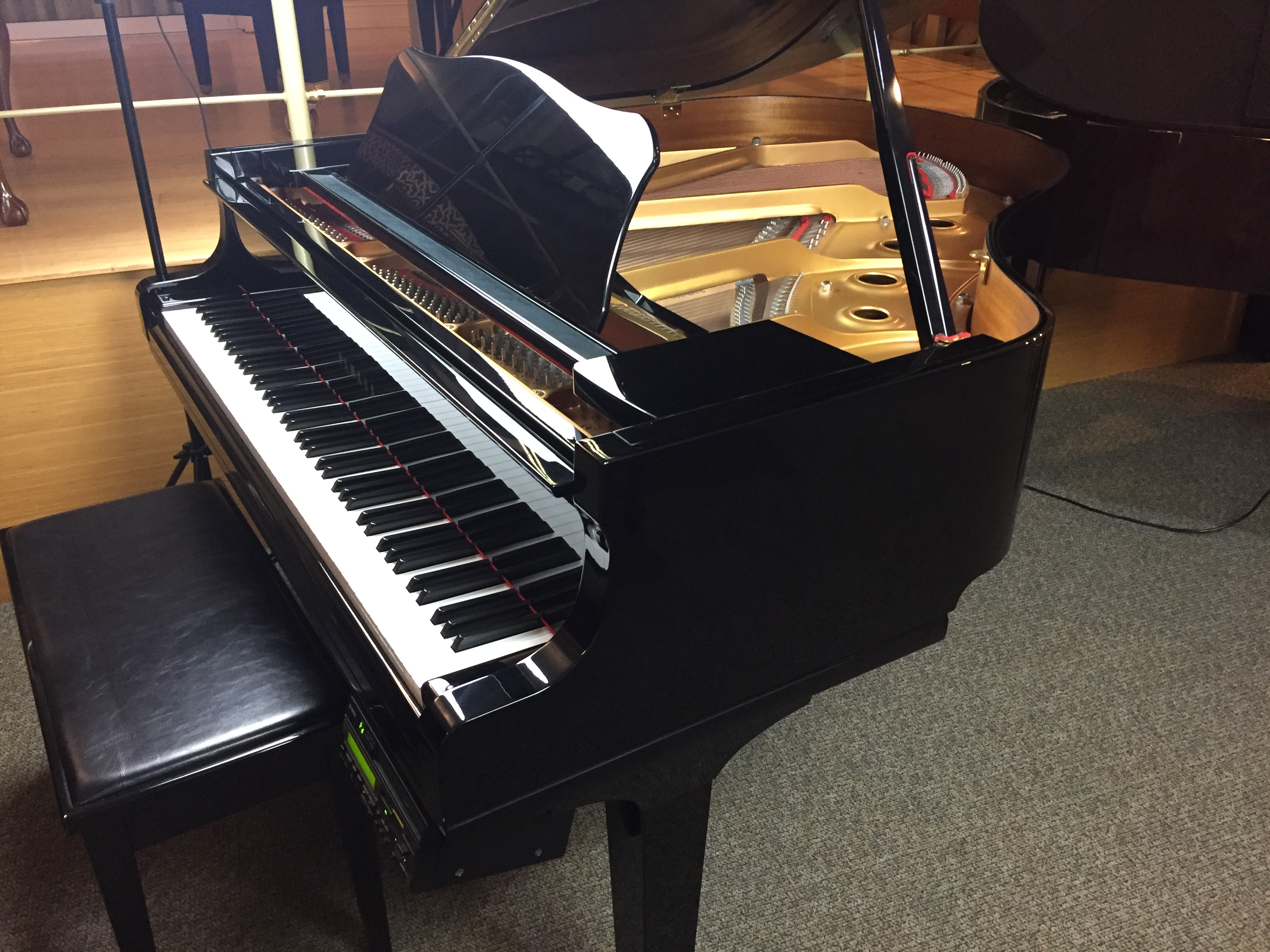
The CLP-795GP receives all the grand piano accoutrements from the CLP features list, namely the GrandTouch keyboard with wooden white keys and an increased length from the tip of the key to the fulcrum, to the GP response damper pedal that closely tracks the continuous pedal depression behaviour of an acoustic grand. The difference is that this grand has literally no strings attached - in place of an acoustic grand piano's soundboard and strings there is a beautifully finished polished wooden housing containing a number of shiny round speakers, laid out in what Yamaha call a Grand Acoustic Imaging array. Looking to all intents and purposes like an acoustic baby grand piano, the CLP-795GP sits at the top of the Clavinova CLP range. Aside from this, the two models are practically identical, with the same onboard features, number of voices and accompaniment styles, making the 150 quite exceptional value.

Of the two Clavinovas in the CSP family, the CSP-150 is significantly more affordable than its stablemate the CSP-170, which for an extra few hundred quid benefits from the premium NWX action with real wooden white keys, more powerful amplifiers and an upgraded speaker system. The system will also analyse tunes from your music library and generate a score to play along with, complete with guide lights. A genuinely useful educational aid when coupled with the Smart Pianist app, this makes the CSP range an attractive proposition for beginners looking for an innovative way to learn piano.īristling with advanced features, the CSP-150 offers a fully automated backup band that generates chords and bass parts according to what you’re playing, rather than having you follow what it’s doing.
#YAMAHA VIRTUAL PLAYER PIANO BLUETOOTH#
It's also compatible with Smart Pianist via Bluetooth for an enhanced experience.īesides being a fully-specced, great-sounding digital piano, the big selling point of the CSP ‘Smart’ Clavinovas is the StreamLights guide system that uses a strip of LEDs across the width of the piano to tell you what notes to play and when. What you get with the S55 then is a supremely playable key action, the same great CFX sound engine and a more powerful sound tailored to the smaller space. The other main difference between the full-size Arius models and the S-series models is that the slimmer instruments feature folding keyboard covers rather than ones that slide back into a recess in the cabinet. This means that it benefits from the same upgraded feature set that the 165 has over the 145, namely a superior GH3 keyboard and a more powerful 20W speaker system. The S55 is the slimmed-down version of the YDP-165, and to all intents and purposes is the same piano in a smaller cabinet. The S models in the range are the slimline versions of the regular YDP instruments, featuring a shallower front-to-back profile to enable them to fit into an even smaller environment. In addition, the two effects slots give you access to Tremolo, Vibrato, Wah Wah, Chorus, Flanger, Phaser, Reverb, Delay, 3-band EQ, and AMP simulation.Yamaha's Arius range of console-style digital home pianos is designed to offer an elegant musical centrepiece for domestic spaces at an affordable price. The Crumar Seventeen is a classic-style stage piano with a range of sound engines, including Tine Electric Piano, Reed Electric Piano, Electric Grand, Clavi, DX Digital E.P., MKS Digital E.P., Japanese Acoustic Grand, German 274 Acoustic Grand, synth piano, piano-string, and combi sounds. The electric piano sound really took off in the 1970s and has since become synonymous with a range of musical styles, including Jazz, RnB, Soul, Disco, Rock, Hip-Hop, and House. Choosing the Best Stage PianosĪlthough many collectors and enthusiasts as well as members of our Gearnews team have vintage Rhodes or Wurlitzer pianos, they aren’t always the most practical for life on the road.Īnother aspect is that the evolution of digital sampling has provided the technology to design keyboards that can mimic all the sonic characteristics of classic electric pianos, as well as instruments like organs, clavinets, and even the famous mellotron.

This, of course, produces a different sound, and while the Wurlitzer has a unique midrange bite, the Rhodes has a longer sustain. Where the Rhodes and the Wurlitzer differ is the fact that the Wurlitzer uses metal reeds as opposed to rods. A marvel of post-war engineering, the electric piano’s original designs used a system in which hammers strike thin metal rods called tines which are connected to tone bars and amplified with pickups that perpetuate sound in a similar way to the electric guitar.


 0 kommentar(er)
0 kommentar(er)
